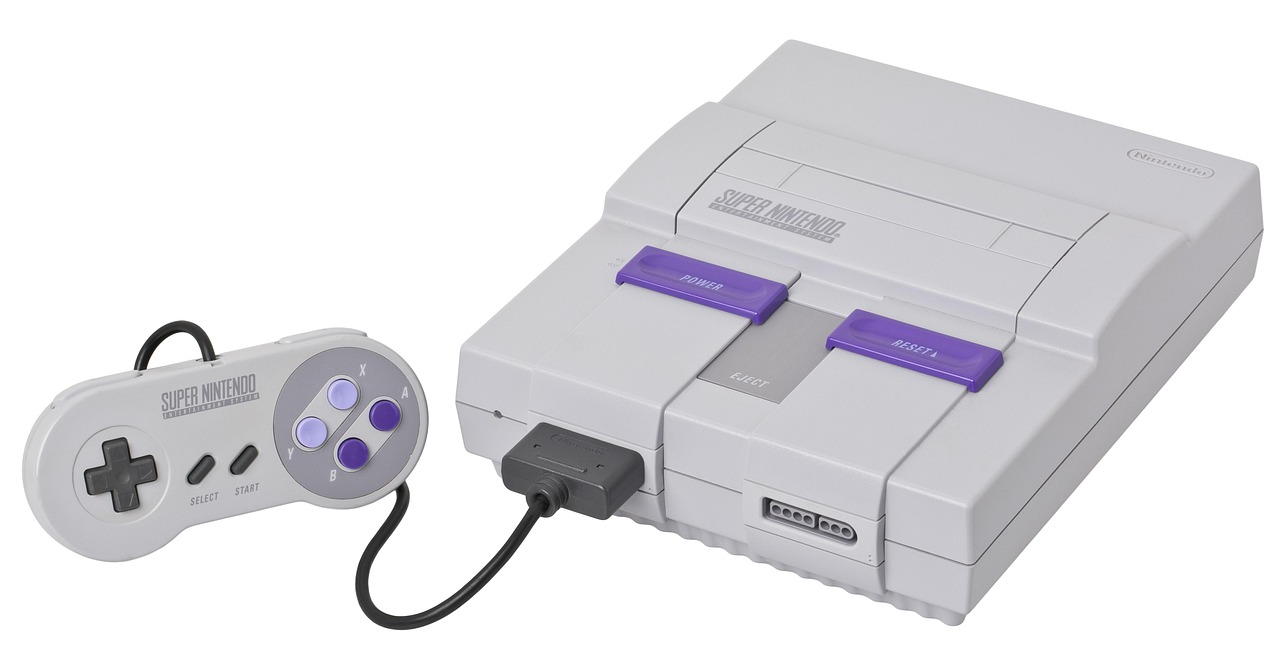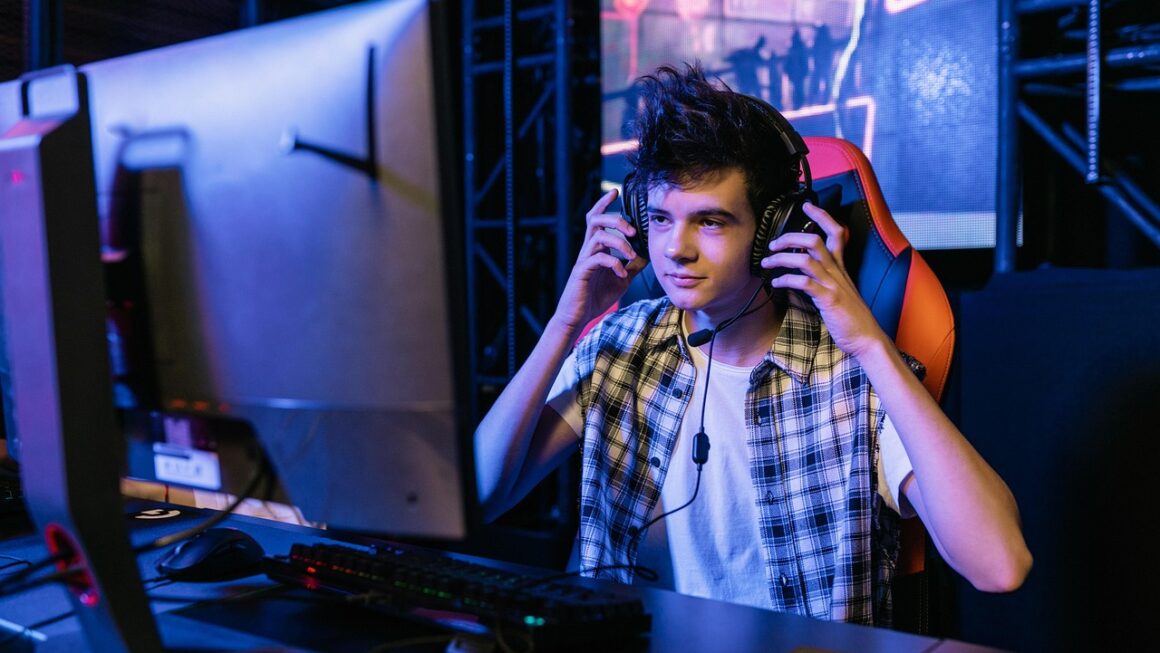The rumble of a distant engine, the chilling whisper of a zombie horde, the awe-inspiring vista of an alien planet – these are just glimpses of the immersive realities that VR gaming delivers. Virtual Reality (VR) gaming has exploded onto the scene, transforming how we interact with digital worlds. It’s no longer a futuristic fantasy; it’s a present-day revolution reshaping the gaming landscape. This blog post delves into the depths of VR gaming, exploring its technology, benefits, challenges, and future, helping you understand why it’s more than just a trend.
What is VR Gaming?
The Core Technology Behind VR
VR gaming utilizes headsets equipped with screens and motion sensors to create an immersive, 3D environment. Unlike traditional gaming on a monitor, VR places you inside the game world. The key components that make this possible include:
- Head-Mounted Display (HMD): The central piece of VR technology. It displays stereoscopic images, one for each eye, creating a sense of depth. Examples include Oculus Quest 2, HTC Vive Pro 2, and PlayStation VR2.
- Motion Tracking: Sensors track your head and body movements, translating them into actions within the virtual environment. This ensures that the virtual world moves with you, enhancing realism.
- Controllers: These allow you to interact with the VR world. They often feature buttons, joysticks, and haptic feedback for a more tactile experience.
- Powerful PC or Console (for PCVR and ConsoleVR): High-performance hardware is required to render the complex graphics and calculations needed for a smooth VR experience.
How VR Gaming Differs from Traditional Gaming
VR goes beyond the confines of a screen, offering a level of immersion that traditional gaming simply cannot match.
- Enhanced Presence: Feeling like you are physically present in the game world is a unique characteristic of VR.
- Increased Engagement: VR demands active participation. You’re not just watching; you’re doing.
- Unique Gameplay Mechanics: VR opens up new possibilities for gameplay, such as physically dodging projectiles or using your hands to manipulate objects.
- Example: Playing a first-person shooter (FPS) in VR versus on a monitor is a completely different experience. In VR, you might physically duck behind cover or reach out to grab a weapon, actions that enhance the realism and intensity.
The Benefits of VR Gaming
Immersive Experiences and Enhanced Realism
This is perhaps the most significant benefit of VR gaming. The ability to step into another world and truly feel like you’re there is unparalleled.
- Increased Sensory Input: VR stimulates multiple senses, including sight, sound, and touch (through haptics), creating a more believable and engaging experience.
- Emotional Connection: The sense of presence can lead to a deeper emotional connection with the game and its characters.
Potential for Physical Activity
While VR is often associated with sedentary gaming, some VR games promote physical activity.
- Active Games: Titles like Beat Saber, Supernatural, and BoxVR require physical movement, offering a fun and engaging workout.
- Improved Reflexes and Coordination: VR gaming can help improve reaction time and hand-eye coordination.
- Example: Beat Saber is a highly popular VR rhythm game where players use lightsabers to slice through incoming blocks, providing an excellent cardio workout while having fun.
Social VR and Multiplayer Experiences
VR isn’t just a solitary experience; it can also be incredibly social.
- Virtual Gatherings: VR platforms like VRChat and Rec Room allow users to meet and interact in virtual spaces.
- Multiplayer Gaming: Many VR games offer multiplayer modes, allowing you to team up with friends or compete against other players.
- Collaborative Experiences: Some VR experiences are designed specifically for collaborative gameplay, requiring players to work together to solve puzzles or complete objectives.
Challenges and Limitations of VR Gaming
Cost of Entry
VR hardware can be expensive, which is a significant barrier to entry for many gamers.
- High-End Headsets: Premium VR headsets like the HTC Vive Pro 2 can cost upwards of $800, not including the powerful PC required to run them.
- Accessories: Additional accessories, such as motion trackers and haptic suits, can further increase the cost.
Technical Requirements and Setup
Setting up a VR system can be complex and require technical knowledge.
- PC Requirements: PC-based VR requires a powerful gaming PC with a dedicated graphics card.
- Room Scale Setup: Some VR systems require a dedicated play space, which can be challenging in smaller homes.
- Software Compatibility: Ensuring that your hardware and software are compatible can be a hassle.
Motion Sickness and Discomfort
Motion sickness is a common issue in VR gaming, especially for new users.
- Latency and Frame Rate: Low frame rates and high latency can cause motion sickness.
- Visual-Vestibular Conflict: Discrepancies between what you see and what your body feels can lead to nausea and dizziness.
- Individual Sensitivity: Some people are simply more susceptible to motion sickness than others.
- Tip: Start with shorter VR sessions and gradually increase the duration as you become more comfortable. Adjusting the headset settings and ensuring a smooth frame rate can also help reduce motion sickness.
The Future of VR Gaming
Advancements in Hardware and Software
VR technology is constantly evolving, with new innovations on the horizon.
- Improved Resolution and Field of View: Future headsets will offer higher resolution displays and wider fields of view, further enhancing immersion.
- Wireless VR: Wireless VR headsets will eliminate the need for cumbersome cables, providing greater freedom of movement.
- Haptic Technology: Advanced haptic suits and gloves will provide more realistic tactile feedback, allowing you to feel the virtual world.
- Eye Tracking and Foveated Rendering: Eye-tracking technology will allow headsets to track where you’re looking, enabling foveated rendering (rendering only the area you’re looking at in high detail) and improving performance.
Integration with Other Technologies
VR is poised to integrate with other emerging technologies, creating even more immersive and interactive experiences.
- Augmented Reality (AR): Combining VR and AR could lead to mixed reality (MR) experiences that blend virtual and real-world elements.
- Artificial Intelligence (AI): AI could be used to create more intelligent and responsive virtual characters and environments.
- 5G and Cloud Gaming: 5G and cloud gaming will enable VR experiences to be streamed to a wider range of devices, making VR more accessible.
Impact on the Gaming Industry and Beyond
VR is not just changing how we play games; it’s also impacting other industries.
- Training and Simulation: VR is being used for training and simulation in fields such as medicine, engineering, and the military.
- Education: VR can provide immersive learning experiences, allowing students to explore historical sites or dissect virtual organisms.
- Entertainment:* VR is being used to create new forms of entertainment, such as virtual concerts and immersive movies.
Conclusion
VR gaming is a revolutionary technology that offers unparalleled immersion and engagement. While challenges remain, the rapid advancements in hardware and software, coupled with its expanding applications beyond gaming, solidify its place as a key technology of the future. Whether you’re a seasoned gamer or new to the world of virtual reality, exploring VR gaming can unlock a world of possibilities and experiences you never thought possible. As the technology continues to evolve and become more accessible, VR gaming will undoubtedly transform the way we play, learn, and interact with the world around us.



